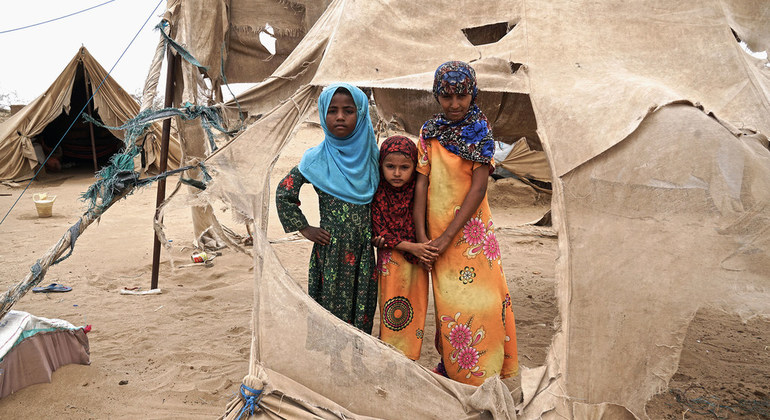Climatic shocks, large infectious disease outbreaks and intensifying, protracted conflicts, have resulted in global needs increasing by some 22 million people in the past year, Mark Lowcock told journalists in Geneva, at the launch of the UN humanitarian affairs coordination office’s (OCHA) Global Humanitarian Overview.
“In 2020, nearly 168 million people worldwide will need humanitarian assistance and protection,” he said. “That represents about one person in 45 on the planet. It is the highest figure in decades.”
On current trends, our projections show that more than 200 million people could be in need of assistance by 2022 – OCHA chief, Mark Lowcock
Another disturbing trend is that armed conflicts “are killing and maiming a record number of children”, Mr. Lowcock explained. “More than 12,000 in fact were killed or maimed in conflict in 2018, and 2019 has been worse.”
In addition, women and girls were at higher risk of sexual and gender-based violence than in the past, and one in five people living in conflict areas has a mental health condition, he said.
In a call to donors, the UN relief chief said that the UN and partner organisations including the Red Cross and other non-governmental organisations “will be aiming to assist 109 million of the most vulnerable people”.
Climate change risks, more than expected
More communities had been affected by conflict and yet more “were affected by climate change-related events than we had projected”, Mr. Lowcock insisted, in reference to more frequent drought, flooding and tropical cyclones that tend to disproportionately affect the poor and vulnerable.
“Thirteen of the 20 countries most vulnerable to climate change are places in which we have an inter-agency appeal,” he noted.
Yemen tops the list again
In terms of sheer scale, Yemen “is still going to be the world’s worst humanitarian crisis” in 2020 after nearly five years of war, the UN official maintained. “The number of people in need is expected to remain close to this year’s levels, that’s around 24 million people, 80 per cent of the population.”
Detailed in the Global Humanitarian Overview 2020, the appeal for Yemen is $3.2 billion.
Funding is also needed for a multitude of other protracted conflicts, including Afghanistan ($732 million for 9.4 million people), Burundi ($104 million for 1.7 million people), Iraq ($520 million for 4.1 million people), Syria ($3.3 billion for 11 million people) and the Central African Republic ($388 million for 2.6 million people), among others.
Nearly 800 attacks against healthworkers and facilities
To illustrate a growing disregard by combatants for international humanitarian law, Mr. Lowcock highlighted nearly 800 attacks against healthworkers and healthcare facilities in the first nine months of 2019, which claimed 171 lives.
The unexpected scale of infectious disease outbreaks has also helped drive needs to unprecedented levels.
“In Africa, in the first three months of this year, there were 700 per cent more measles cases than in the same period last year”, Mr. Lowcock said, a likely reference to the more than 5,000 measles fatalities in the Democratic Republic of the Congo since January.
Turning to Venezuela, where the funding requirement is $1.35 billion for 3.8 million people in 2020, needs are “substantially outstripping resources”, the UN official said.
A “substantial increase in humanitarian assistance for Venezuelans” was needed for those inside their country” and an approximate doubling of assistance for those who’ve left the country, Mr. Lowcock insisted.
“On current trends, our projections show that more than 200 million people could be in need of assistance by 2022,” he added.



